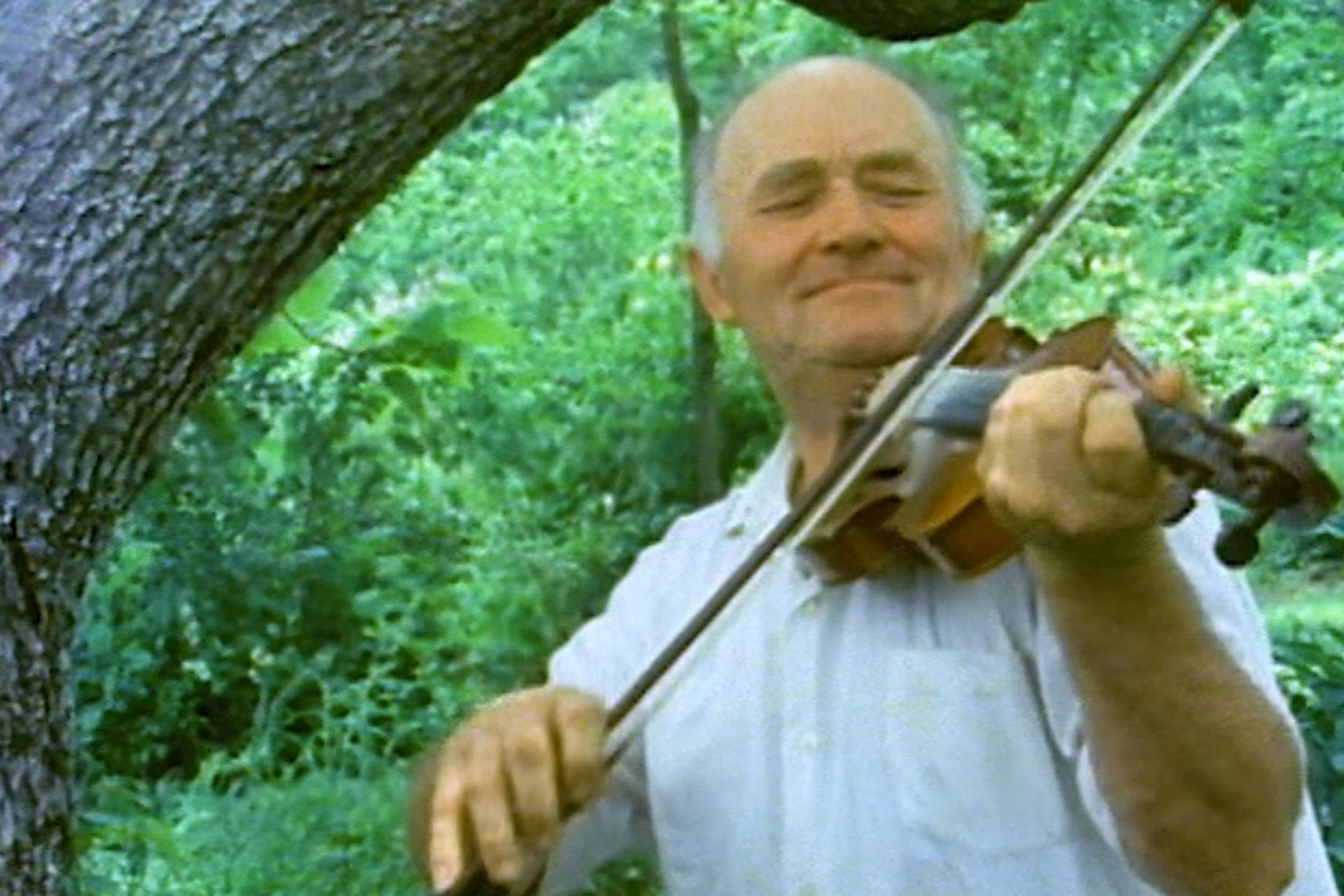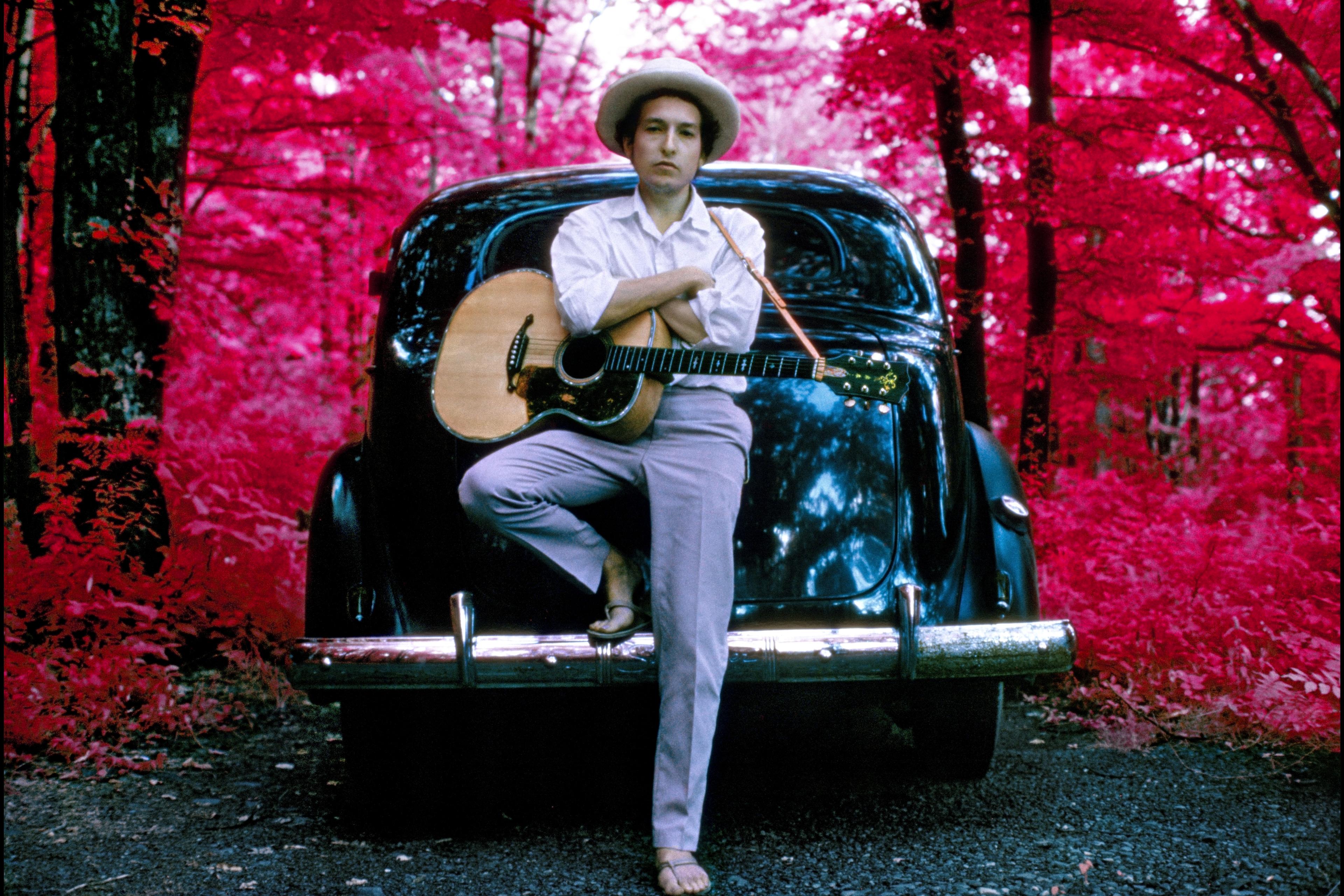In some ways, the heavy weight of the Great Depression never lifted from eastern Kentucky. In the wake of the financial crash of the 1930s, tough times stayed tough as hard work on farms gave way to harder work in coal mines. Eventually, with mechanisation, even dangerous mining jobs grew hard to come by. It’s a poverty crisis that continues today in rural Appalachia, as coal power falls even further out of favour due to its environmental impact.
While The High Lonesome Sound (1962) is a chronicle of music, not misery, it doesn’t gloss over the tolls and trials of Appalachian life. One of its primary subjects, the US folk musician known as Roscoe Holcomb (1912-81), began performing the traditional sounds of the hills simply to make ends meet. Though only approaching 50 at the time of filming, his deeply creased face, world-weary eyes and slumped posture sculpted by decades of physical labour make him look perhaps a decade older. But even as music became a means of survival, he doesn’t deny there’s a magic to it. It pours out of him when he picks up a banjo and transforms into a tenacious performer. It’s apparent, he says, when he sees a small child drawn to an instrument. Indeed, in the Appalachian tradition, music and spirituality are inseparable, with the songs and styles deeply rooted in the rhythms of the Baptist church.
‘Music is not an escape. It gives a way of making life possible to go on,’ says the US filmmaker John Cohen (1932-2019) at the film’s opening. His voice throughout – low, polished and distinctly un-Southern – offers one of the only hints at a world beyond Appalachia in the work. The editing is sparse. The camera lingers on singers and songs, scenes of worship from local churches, and even spiderwebs. The effect is immersive – the result of a filmmaker with a genuine interest in capturing a place, its people and its culture, and sharing it with the wider world. Even as rock and roll begins to permeate local dancehalls, there’s no sense of touristy, overcooked ‘good-old-days’ nostalgia – a too-familiar refrain in documentaries on traditional art forms.
But, as his voice hints, the man behind the camera is indeed an outsider. A Yale-educated New York City native, Cohen made The High Lonesome Sound while seeking out authentic Southern sounds which he hoped that his own folk band, New Lost City Ramblers, might harness. His interest in the traditional music of Appalachia, including this film, would help instigate the US folk revival, with the likes of Bob Dylan and Eric Clapton eventually counting themselves among Holcomb’s most ardent fans. Sprawling, thoughtful essays could and have been written unpacking the relationship that Cohen and Holcomb would later build, as well as issues of power dynamics and representation in folk art.
But viewed some 60 years later, the chord that The High Lonesome Sound struck with the wider culture still resonates. Cohen, for his part, is a talented and thoughtful filmmaker, chronicling the music and the region with seemingly little in the way of pretence, judgment or agenda. And the music, from Holcomb and his rural Kentucky contemporaries, is powerful – a spiritual expression of hope, or at least persistence, amid hardship.
Written by Adam D’Arpino







